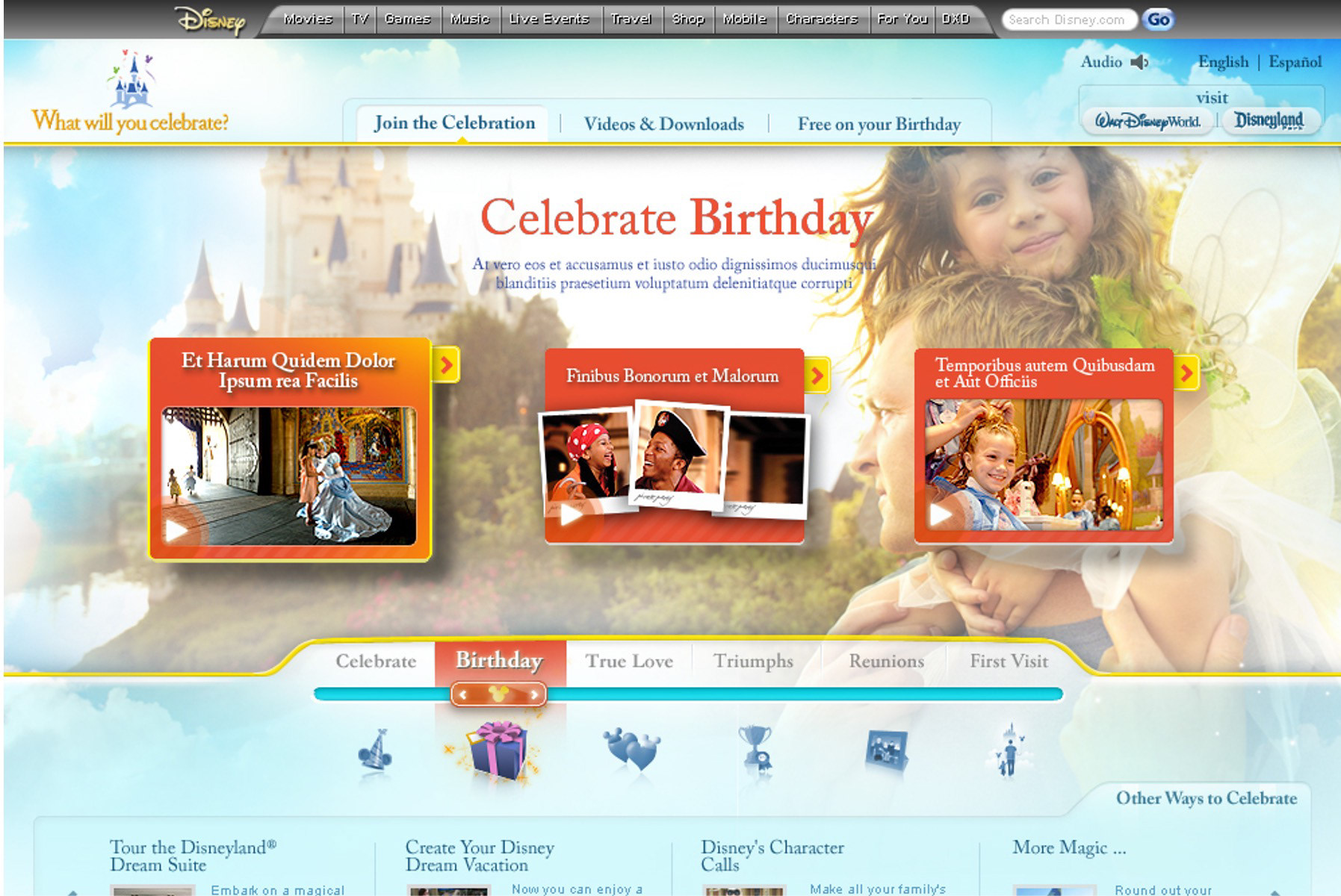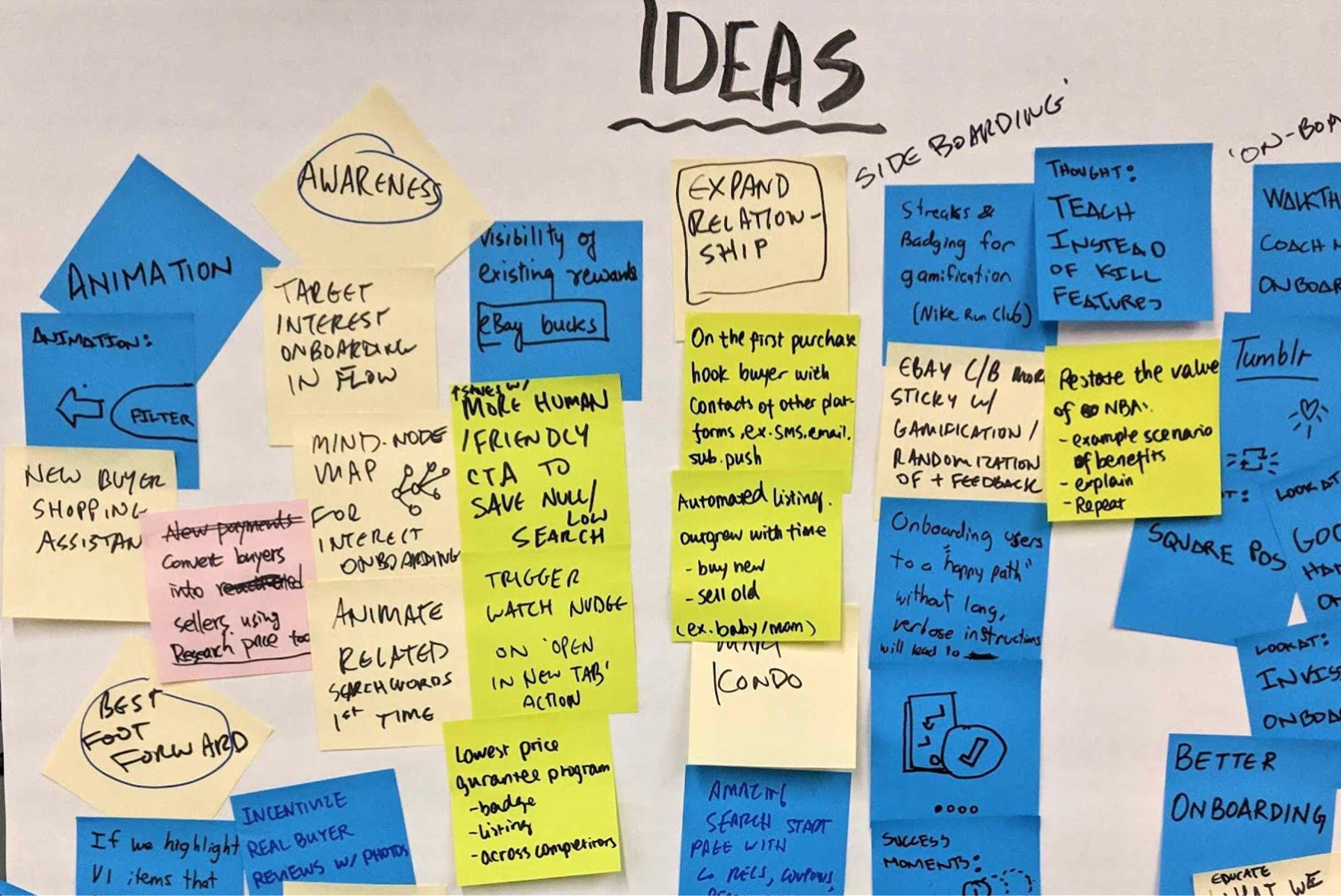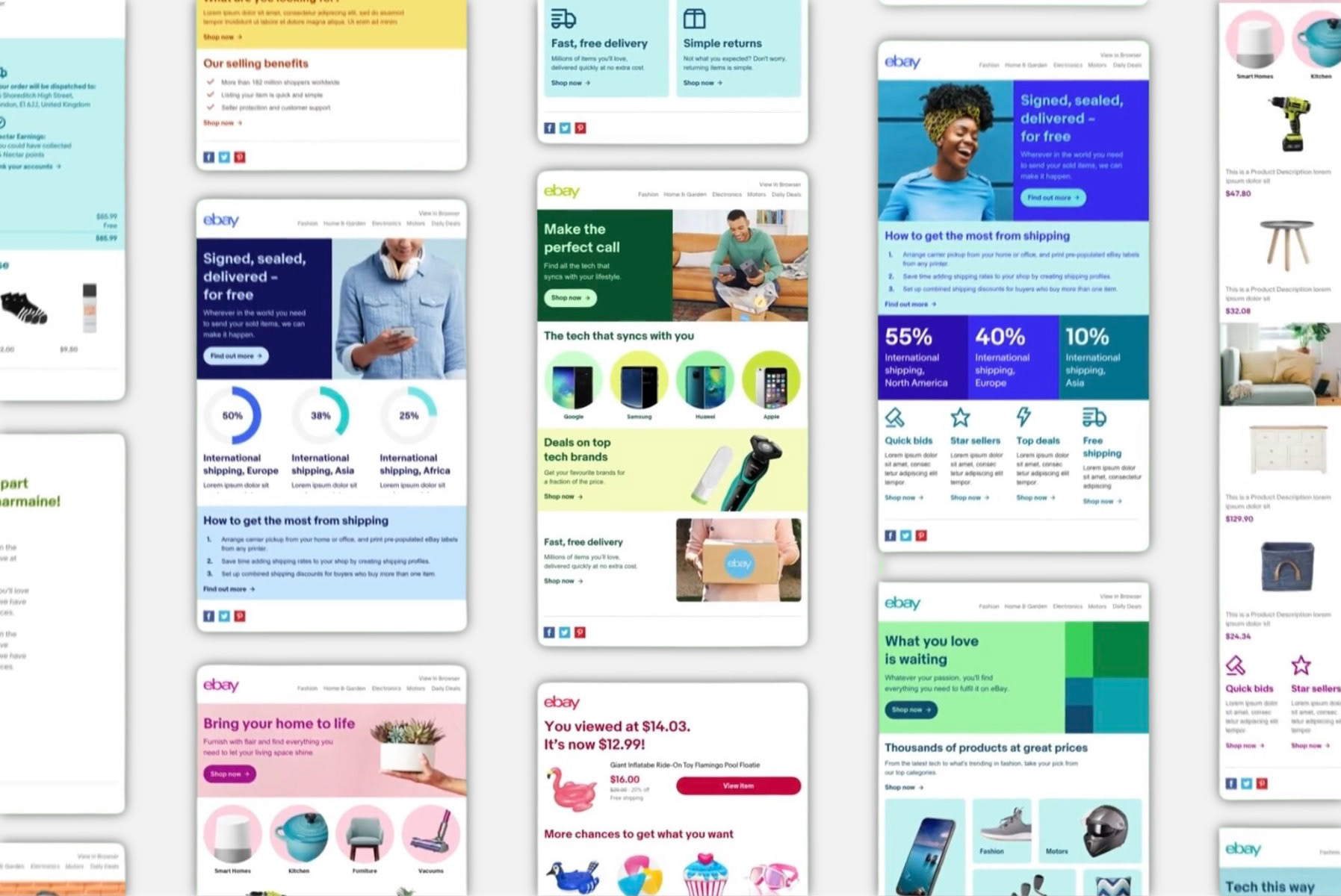I created a framework for a content strategy that allowed for an evolution of the brand and flexibility for future marketing tech tool requirements. The result was a consistent and cohesive brand expression that improved our customers’ overall experience.
We had a problem; eBay customers were overwhelmed by a disjointed experience. The brand expression and content strategy were inconsistent across channels, which eroded trust. McCann conducted in 2019, identifying 12 areas for improvement.
Additionally, we conducted extensive user research for a deeper understanding of customer pain points. With this added context, we developed an approach to Conversational Marketing and design to meet their needs. We drove one-to-one interactions, leveraging human conversation through different touchpoints across all communications. These allowed us to engage, learn about, and build stronger customer relationships.
Additionally, we conducted extensive user research for a deeper understanding of customer pain points. With this added context, we developed an approach to Conversational Marketing and design to meet their needs. We drove one-to-one interactions, leveraging human conversation through different touchpoints across all communications. These allowed us to engage, learn about, and build stronger customer relationships.
12 key areas to improve the customer experience
1. Undifferentiated templates that look like repeats
2. No clear hierarchy of information
3. Cluttered layouts
4. Overly dense layouts with no breathing room
5. Ambiguous calls-to-action without clear expectations
6. No clear brand messaging where the brand is watered down
7. Disingenuous emoticons in email subject lines/push that are off-brand
8. Comms are too frequent and undistinguished for new or returning customers
9. Excessive content that ultimately gets clipped off or obstructed
10. Competing messages that confuse customers
11. Irrelevant content with little apparent targeting
12. Deal-focused vs. relationship focused
2. No clear hierarchy of information
3. Cluttered layouts
4. Overly dense layouts with no breathing room
5. Ambiguous calls-to-action without clear expectations
6. No clear brand messaging where the brand is watered down
7. Disingenuous emoticons in email subject lines/push that are off-brand
8. Comms are too frequent and undistinguished for new or returning customers
9. Excessive content that ultimately gets clipped off or obstructed
10. Competing messages that confuse customers
11. Irrelevant content with little apparent targeting
12. Deal-focused vs. relationship focused
Conversational Marketing tenets
• Conversation is inherently multimodal—it includes what is said, seen, heard, and felt
• The tone of voice in conversations fluctuates to communicate the meaning behind the message
• Taking turns in a conversation keeps it in sync
• A good conversation participant keeps track of the conversation
• The tone of voice in conversations fluctuates to communicate the meaning behind the message
• Taking turns in a conversation keeps it in sync
• A good conversation participant keeps track of the conversation










